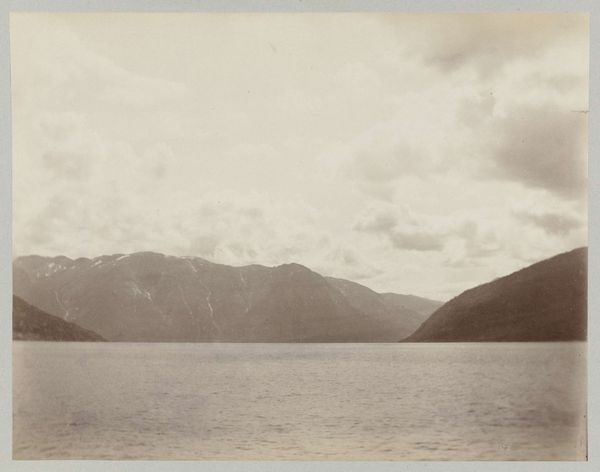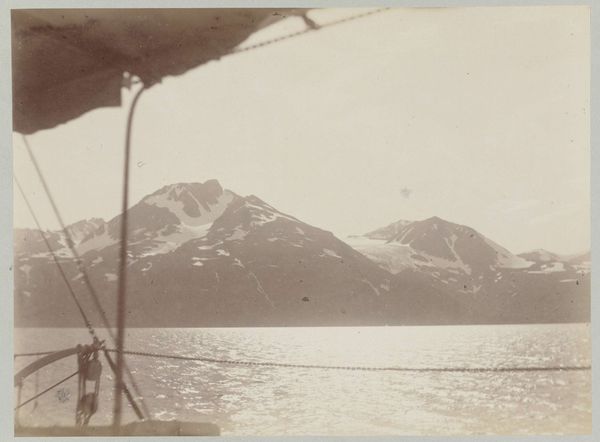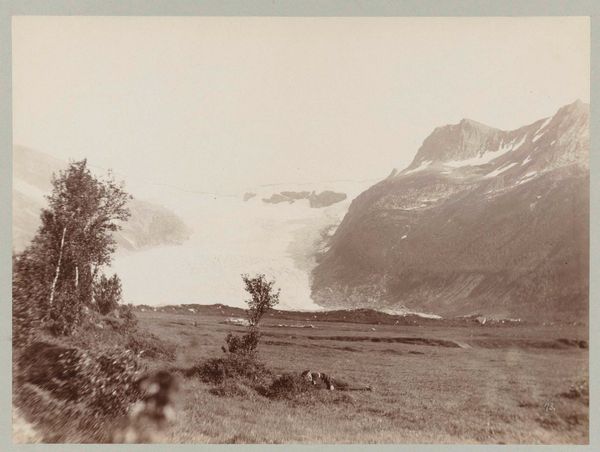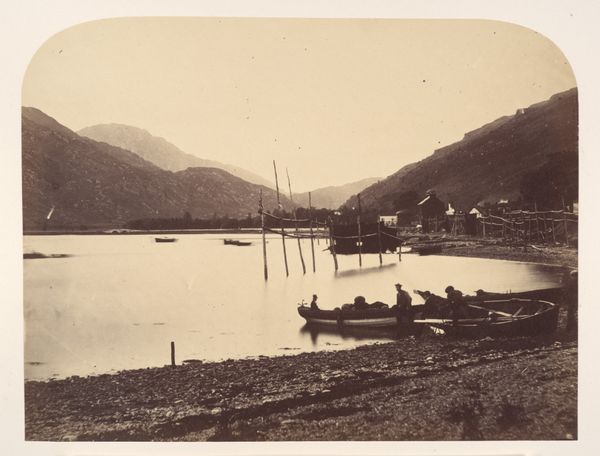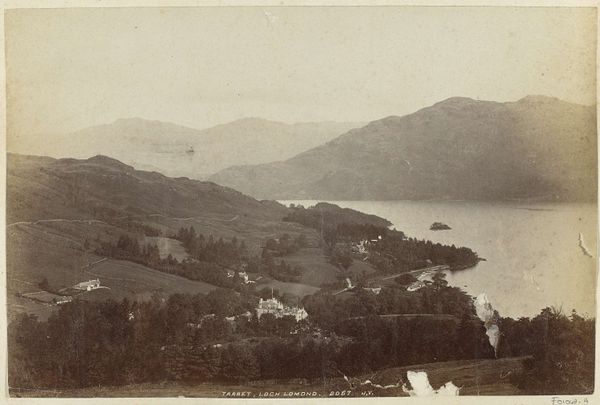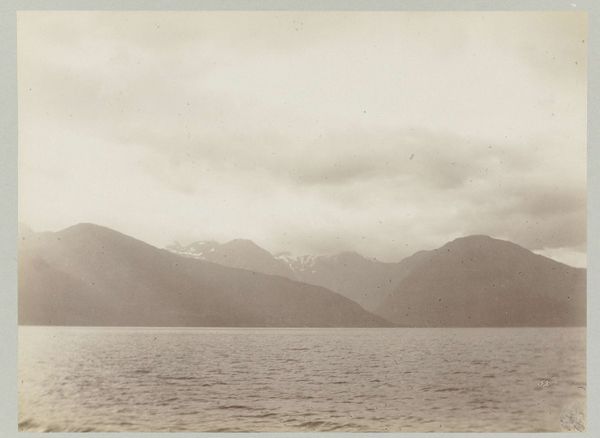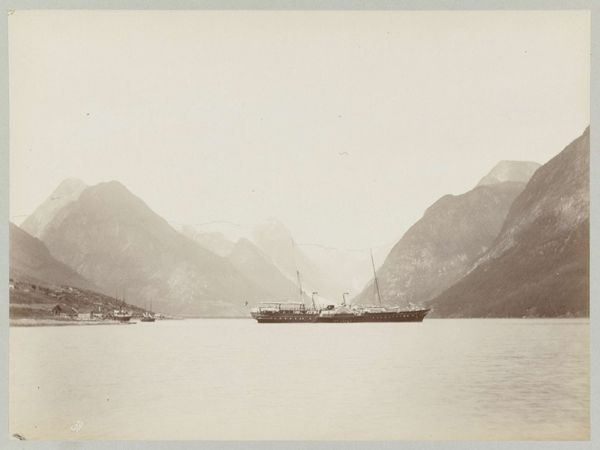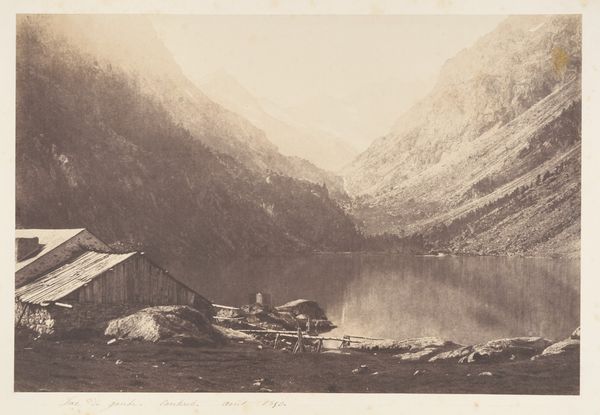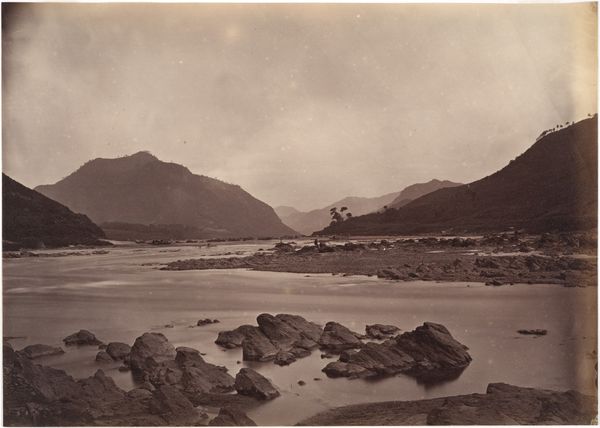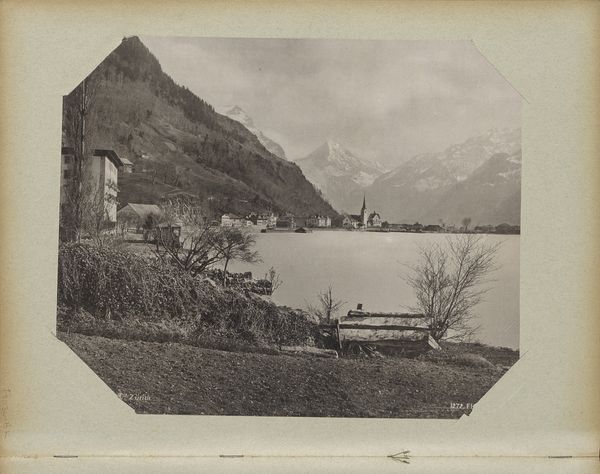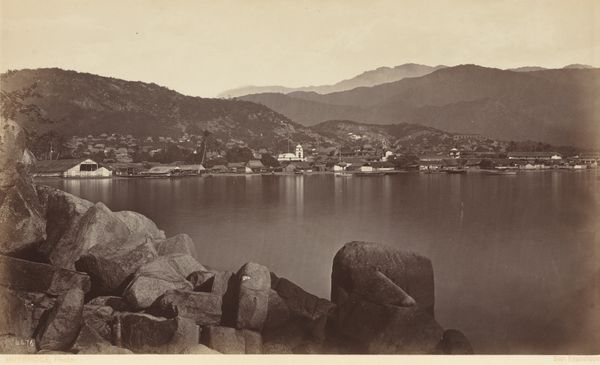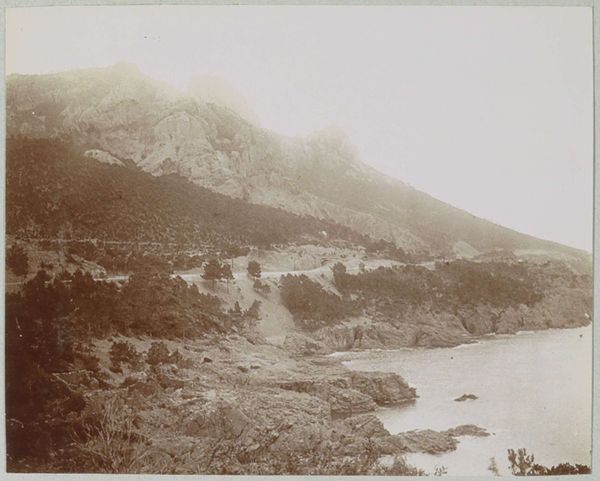
Dimensions: height 168 mm, width 203 mm, height 314 mm, width 450 mm
Copyright: Rijks Museum: Open Domain
Curator: This is Paul Güssfeldt's "Noors berglandschap met kustplaats," created in 1889. The medium is gelatin silver print. Editor: Immediately striking, the tones are so subtle. There's almost a monochromatic harmony, the grays modulating across the landscape and water. A real symphony in sepia! Curator: Yes, and beyond the aesthetic appeal, it offers a peek into the romanticized view of nature at the turn of the century, shaped by burgeoning tourism and the social impacts of industrial advancement. How did societies in these areas deal with modernization, and what sort of long term effects were sustained? This type of scene seems to invite one into nature to leave their cares behind. Editor: Absolutely. Look at the composition though. That large rock in the foreground—its rough texture and strong presence acts as a repoussoir, drawing the eye deeper into the recessive space, enhancing the pictorial depth, especially contrasted with the placid, reflective water plane. Curator: A depth certainly reflecting on social values as much as just natural landscapes. How can the idea of the 'picturesque' and its consumption be problematized as potentially contributing to environmental damage and the erasure of local identities? What’s visible, and what’s purposefully, or perhaps inadvertently, left unseen in images like these? Editor: Well, within that perspective, one can still not ignore Güssfeldt's play with light. The diffused light source flattens details and creates a sense of atmosphere, of course. A delicate balancing act between realism and something much more emotionally resonant. The scale amplifies the sense of a sweeping Romantic-era sublime—a reminder of our own insignificance in the vastness. Curator: The small coastal village, dwarfed by the landscape, suggests that complex interrelationship. One can also think about its relevance to contemporary dialogues surrounding environmental stewardship, representation, and whose stories are prioritized when documenting landscapes. Editor: An astute observation, as always. I, however, continue to see a formal, structural mastery that continues to evoke tranquility—in spite of the latent themes that might underscore some sense of environmental, cultural anxiety. Curator: Thank you. It has provided a view on social concerns and issues, reflecting identity and environment. Editor: Likewise. Its enduring power remains in the artistry itself, even when it comes with inherent questions.
Comments
No comments
Be the first to comment and join the conversation on the ultimate creative platform.
